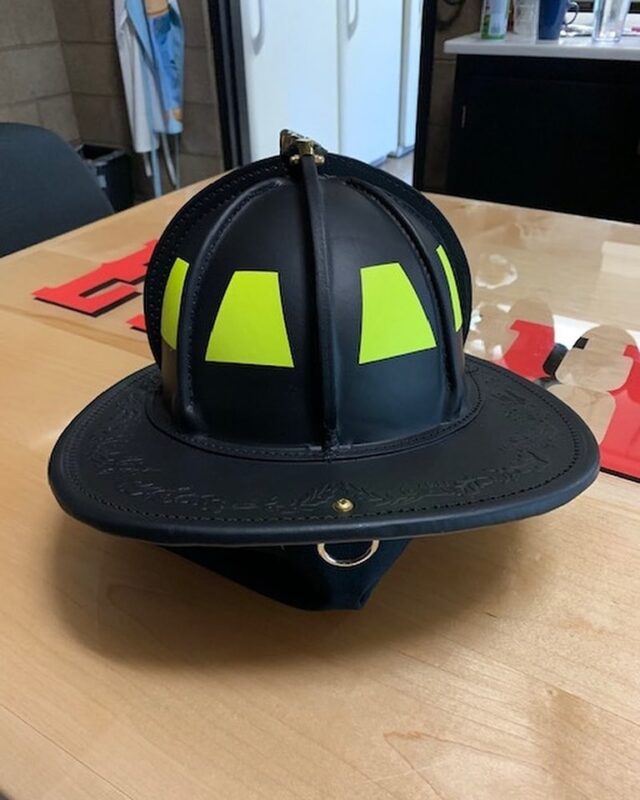Uncategorized
Phenix Helmets
Phenix Helmets are designed for firefighters who demand the highest level of protection, comfort, and performance. Built with precision and reinforced materials, these helmets ensure safety in the most challenging firefighting conditions. Whether you’re battling structural fires or performing rescue operations, Phenix Helmets deliver unmatched reliability.
Why Choose Phenix Helmets?
Phenix Helmets stand out in the firefighting community for several reasons:
Customizable Options
From reflective decals to department-specific insignias, Phenix Helmets offer full customization, allowing departments and individual firefighters to personalize their helmets while maintaining maximum protection.
Unparalleled Safety Standards
Every Phenix Helmet meets or exceeds NFPA 1971 and OSHA standards, providing superior impact and heat protection. These helmets are engineered to withstand the extreme conditions firefighters face every day.
Innovative Design for Comfort
With adjustable headbands, ergonomic padding, and lightweight construction, Phenix Helmets ensure all-day comfort. Firefighters can focus on their mission without being weighed down by their protective gear.
Durability You Can Count On
Crafted from high-quality materials, Phenix Helmets resist cracks, abrasions, and heat damage. Each helmet is built to last, even under the most demanding firefighting scenarios.
Key Features of Phenix Helmets
Integrated Safety Accessories: Mounts for face shields, lights, and communication devices.
Advanced Shell Technology: Heat-resistant fiberglass and polycarbonate construction.
High-Visibility Design: Reflective strips for night and low-light operations.
Adjustable Suspension: Ensures a secure fit for every head size.
Caring for Your Phenix Helmet
Maintaining your Phenix fire helmet is essential to ensure safety, comfort, and longevity. Proper care keeps your helmet functioning at its best while preserving its professional appearance.
1. Regular Cleaning
- Leather Helmets (TL-2): Wipe down with a damp cloth to remove dirt, soot, and debris. Avoid soaking the leather. Apply a leather conditioner periodically to prevent cracking and maintain flexibility.
- Thermoplastic Helmets (First Due): Clean with mild soap and water, then rinse and air dry. Avoid harsh chemicals or solvents that can weaken the shell.
2. Inspection
- Suspension System: Check for fraying or damage and replace any worn parts.
- Chinstrap and Buckles: Ensure they are secure and functional.
- Reflective Markings: Make sure all tetrahedrons or stripes are intact and visible.
3. Proper Storage
- Store your helmet in a cool, dry place, away from direct sunlight or heat sources.
- Avoid stacking helmets or placing heavy objects on top.
- Consider using a helmet bag or dedicated shelf to prevent scratches and dents.
4. Avoid Harsh Conditions
- Keep your helmet away from chemicals or extreme temperatures that could degrade materials.
- Avoid excessive exposure to UV light to prevent fading and material weakening.
5. Maintenance & Replacement
- Replace any damaged components promptly.
- Follow NFPA guidelines and the manufacturer’s recommended service life for optimal safety.
6. Custom Accessories Care
Regularly update accessories like goggles, liners, and pads for continued comfort and protection.
For helmets with custom paint, decals, or leather combs, follow Phenix-specific recommendations to avoid damage.
Frequently Asked Questions (FAQ)
Q: Are Phenix Helmets NFPA certified?
A: Yes, all Phenix Helmets meet or exceed NFPA 1971 standards for structural firefighting.
Q: Can I customize my Phenix Helmet?
A: Absolutely. You can add decals, insignias, and reflective markings for visibility and identification.
Q: How long does a Phenix Helmet last?
A: With proper care, a Phenix Helmet can last many years, even under rigorous firefighting conditions.
Specifications of Phenix Fire Helmets
Phenix offers two primary helmet models: the TL-2 Traditional Leather Helmet and the First Due Structural Helmet. Below are their key specifications:
1. TL-2 Traditional Leather Helmet
Type: Traditional leather, NFPA-compliant
Weight: Approximately 55 oz (lightest NFPA-compliant leather helmet)
Shell Material: Handcrafted vegetable-tanned leather with optional combed leather upgrade
Dome: High-temperature thermoplastic interior for added protection
Suspension System: Adjustable 6½” to 7¾”, options for nape strap or ratchet adjustment
Reflective Markings: Eight 3M lime-yellow tetrahedrons for enhanced visibility
Goggles: NFPA-compliant ESS FirePro or ATAC goggles included
Customization: Available in multiple colors, shield designs, and accessories
Ergonomics: Center-balanced, low center of gravity design for comfort during long operations
2. First Due Structural Helmet
Type: Structural firefighting, NFPA-compliant
Weight: Approximately 33–39 oz (lightweight design)
Shell Material: Thermoplastic for durability and heat resistance
Impact Protection: Energy-absorbing closed-cell foam cap
Suspension System: Adjustable 6½” to 8½”, with nape strap or ratchet options
Chinstrap: Nomex strap with postman slide and quick-release buckle
Reflective Markings: Four 3M lime-yellow reflective strips
Compliance: Meets NFPA 1971 and 1951 standards for structural firefighting
Ergonomics: Central balance design reduces neck and upper back fatigue
3. Common Features
Suitable for both individual firefighters and department-wide purchases
Customizable colors and shields
NFPA-compliant accessories such as goggles and chinstraps
Designed for comfort, safety, and durability

